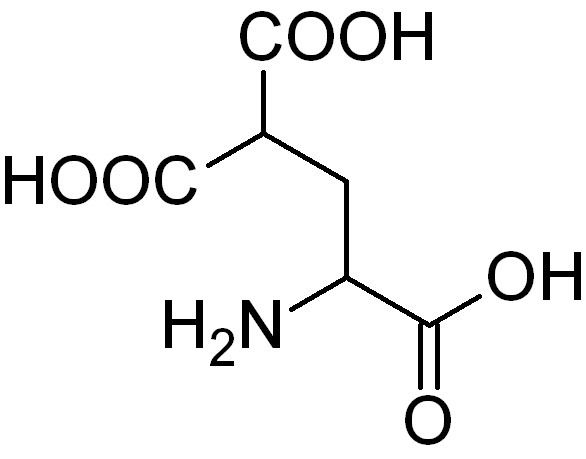Formula C6H9NO6 Classification Tricarboxylic acid | Molar mass 191.14 g/mol | |
 | ||
Medical vocabulary what does 1 carboxyglutamic acid mean
Carboxyglutamic acid (or the conjugate base, carboxyglutamate), is an uncommon amino acid introduced into proteins by a post-translational carboxylation of glutamic acid residues. This modification is found, for example, in clotting factors and other proteins of the coagulation cascade. This modification introduces an affinity for calcium ions. In the blood coagulation cascade, Vitamin K is required to introduce gamma-carboxylation of clotting factors II, VII, IX, X and protein Z.
Contents
- Medical vocabulary what does 1 carboxyglutamic acid mean
- Gene music using protein sequence of prrg2 proline rich gla g carboxyglutamic acid 2
- Synthesis
- Gamma carboxyglutamic acid rich GLA domain
- Role in Coagulation
- References
Gene music using protein sequence of prrg2 proline rich gla g carboxyglutamic acid 2
Synthesis
In the biosynthesis of
This reaction is catalyzed by a carboxylase that requires Vitamin K as its cofactor. It is not exactly known how Vitamin K participates, but it is hypothesized that a free cysteine residue in the carboxylase converts vitamin K into an active strong base that in turn abstracts a hydrogen from glutamic acid's
Fig. 1.
Gamma-carboxyglutamic acid-rich (GLA) domain
A number of gamma-carboxyglutamate (Gla) residues are present in the Gamma-carboxyglutamic acid-rich (GLA) domain. This GLA domain is known to be found in several proteins, including coagulation factors X, VII, IX, and XIV, vitamin K-dependent protein S and Z, prothrombin, transthyretin, osteocalcin, matrix Gla protein (MGP), inter-alpha trypsin inhibitor heavy chain H2, and growth arrest-specific protein 6 (Gas6). The Gla domain is responsible for the high-affinity binding of calcium ions.
Role in Coagulation
Gamma-carboxyglutamic acid residues play an important role in coagulation. The high-affinity calcium binding sites in the GLA domain of factor IX, which is a serine protease of the coagulation system, were found to partially mediate the binding of factor IXa to platelets and in factor-X activation. In addition, upon mechanical injury to the blood vessel wall, a cell-associated tissue factor becomes exposed and initiates a series of enzymatic reactions localized on a membrane surface generally provided by cells and accumulating platelets. Gla residues partly govern the activation and binding of circulating blood-clotting enzymes and zymogens to this exposed cell membrane surface. Specifically, gla residues are needed in calcium binding and in exposing hydrophobic membrane binding regions to the cell bilayer. Lack of these gla residues results in impaired coagulation or even anticoagulation, which may lead to bleeding diathesis or thrombosis.
